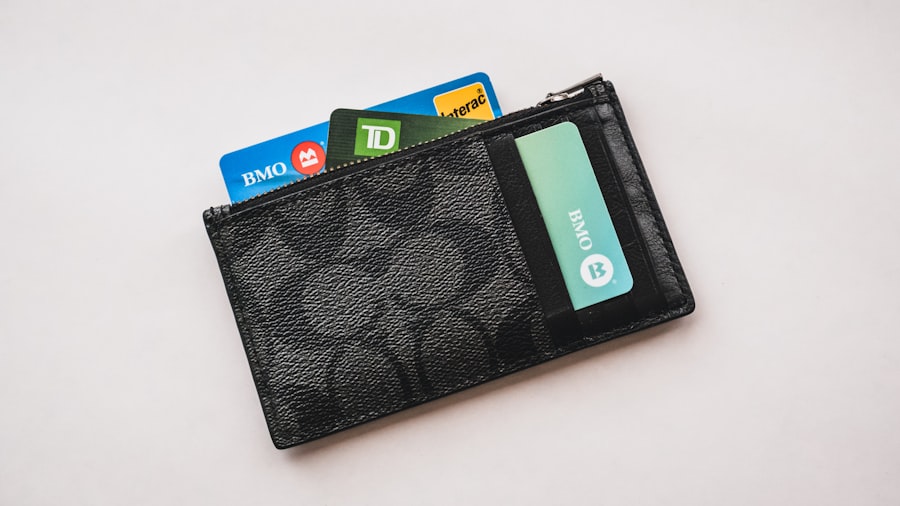“This post may contain affiliate links, if you click a link we may earn a commission if you purchase from that merchant.”
Owning a pet is a wonderful experience that brings joy and companionship to our lives. However, it also comes with a lot of responsibilities, including financial ones. One of the biggest financial responsibilities of owning a pet is the cost of veterinary care. Veterinary bills can be expensive and unexpected, making it crucial to prepare for them in advance.
As pet owners, we want to provide the best possible care for our furry friends. This includes regular check-ups, vaccinations, and preventive treatments. However, there are also times when our pets may experience unexpected emergencies, such as accidents or illnesses. These emergencies can result in high veterinary bills that can put a strain on our finances if we are not prepared.
Table of Contents
The Cost of Pet Ownership: Understanding the Financial Responsibility
Owning a pet can be costly, with expenses ranging from food to medical care. According to the American Society for the Prevention of Cruelty to Animals (ASPCA), the average annual cost of owning a dog is between $1,000 and $2,000, while the average annual cost of owning a cat is between $800 and $1,200. These costs include food, grooming, toys, and basic medical care.
However, it’s important to note that these figures do not take into account unexpected veterinary expenses. Accidents and illnesses can happen at any time, and the cost of treating them can be significant. For example, a broken bone can cost several thousand dollars to treat, while surgery for a serious illness can cost even more.
Understanding the financial responsibility of pet ownership is essential to avoid financial strain. It’s important to budget for both the expected and unexpected expenses that come with owning a pet. By being financially prepared, you can ensure that your pet receives the care they need without putting yourself in a difficult financial situation.
Common Unexpected Emergencies: Accidents and Illnesses
Pets, just like humans, can experience unexpected emergencies. Accidents can happen when we least expect them, whether it’s a fall, a car accident, or a fight with another animal. Additionally, pets can also develop illnesses that require immediate medical attention.
These emergencies can result in high veterinary bills. Emergency veterinary care is often more expensive than regular care, as it may involve specialized treatments, surgeries, or hospitalization. The cost of these treatments can quickly add up, leaving pet owners with a hefty bill to pay.
Being financially prepared for these unexpected emergencies is crucial. It’s important to have a plan in place to cover the cost of emergency veterinary care. This can help alleviate the stress and worry that comes with not knowing how you will afford the necessary treatment for your pet.
The Role of Pet Insurance: Coverage and Benefits
One way to financially prepare for unexpected veterinary bills is by investing in pet insurance. Pet insurance is designed to help cover the cost of veterinary care, including accidents, illnesses, and preventive treatments. It works similarly to health insurance for humans, providing coverage for a variety of medical expenses.
Pet insurance typically covers a percentage of the cost of veterinary care, depending on the plan you choose. Some plans may cover up to 90% of the cost, while others may cover only 70% or less. It’s important to carefully review the coverage and benefits of each plan before making a decision.
In addition to covering accidents and illnesses, some pet insurance plans also offer coverage for routine care, such as vaccinations and dental cleanings. This can help offset the cost of preventive treatments and make it more affordable to keep your pet healthy.
Choosing the Right Pet Insurance: Factors to Consider
When choosing the right pet insurance for your furry friend, there are several factors to consider. These include coverage, deductibles, premiums, and exclusions. It’s important to research and compare different pet insurance options to ensure you are getting the best coverage for your pet’s needs.
Coverage is one of the most important factors to consider when choosing pet insurance. You want to make sure that the plan you choose covers accidents, illnesses, and preventive care. Additionally, you may also want to consider coverage for hereditary conditions, prescription medications, and alternative therapies.
Deductibles and premiums are also important factors to consider. A deductible is the amount you have to pay out of pocket before your insurance coverage kicks in. Premiums are the monthly or annual payments you make for your pet insurance coverage. It’s important to find a balance between a deductible that you can afford and a premium that fits within your budget.
Exclusions are another important factor to consider when choosing pet insurance. Some plans may exclude certain conditions or treatments from coverage. It’s important to carefully review the exclusions of each plan to ensure that it meets your pet’s specific needs.
Pet Insurance vs. Savings: Which is the Better Option?
Deciding between pet insurance and savings can be challenging. Both options have their pros and cons, and it ultimately depends on your personal financial situation and risk tolerance.
Pet insurance provides peace of mind knowing that you have coverage in case of unexpected veterinary expenses. It can help alleviate the financial burden of high veterinary bills and ensure that your pet receives the care they need. However, pet insurance does come with a cost in the form of monthly or annual premiums.
On the other hand, saving money specifically for veterinary expenses can also be a viable option. By setting aside a certain amount of money each month, you can build up a savings fund that can be used to cover unexpected veterinary bills. This option allows you to have more control over your finances and avoid paying monthly premiums.
The downside of relying solely on savings is that it may not be enough to cover the full cost of an unexpected emergency. Veterinary bills can quickly add up, and if you haven’t saved enough, you may find yourself in a difficult financial situation. Additionally, saving for veterinary expenses can take time, and your pet may need medical care before you have enough money saved.
How to Budget for Pet Insurance: Tips and Strategies
Budgeting for pet insurance can help make it more manageable and less stressful. Here are some tips and strategies to help you budget for pet insurance:
1. Evaluate your current expenses: Take a look at your current expenses and identify areas where you can cut back or save money. This could be anything from reducing your dining out budget to canceling unused subscriptions.
2. Set a realistic budget: Determine how much you can afford to spend on pet insurance each month or year. Consider your income, expenses, and other financial obligations when setting your budget.
3. Research different pet insurance options: Compare different pet insurance plans to find one that fits within your budget. Look for plans that offer the coverage you need at a price you can afford.
4. Consider a higher deductible: Opting for a higher deductible can help lower your monthly or annual premium. However, make sure that the deductible is still affordable in case of an emergency.
5. Save on premiums by paying annually: Some pet insurance companies offer a discount if you pay your premium annually instead of monthly. If you can afford to pay the full premium upfront, this can help save you money in the long run.
6. Revisit your budget regularly: As your financial situation changes, it’s important to revisit your budget and make adjustments as needed. This will ensure that you are still able to afford your pet insurance coverage without putting yourself in a difficult financial situation.
Supplemental Options: Care Credit and Other Financing Alternatives
In addition to pet insurance, there are also supplemental options available to help cover unexpected veterinary bills. One such option is Care Credit, a healthcare credit card that can be used to pay for veterinary expenses. Care Credit offers special financing options, including interest-free periods, to help make it more affordable to pay for veterinary care.
Other financing alternatives include personal loans, credit cards, and crowdfunding platforms. These options can provide temporary financial relief in case of an emergency. However, it’s important to carefully consider the terms and interest rates associated with these options before making a decision.
Planning Ahead: Creating an Emergency Fund for Veterinary Expenses
Creating an emergency fund specifically for veterinary expenses can help prepare for unexpected emergencies. Here are some tips and strategies for creating an emergency fund:
1. Set a savings goal: Determine how much you want to save for your pet’s emergency fund. This could be a specific dollar amount or a percentage of your monthly income.
2. Automate your savings: Set up automatic transfers from your checking account to your emergency fund. This will help ensure that you consistently save money without having to think about it.
3. Cut back on unnecessary expenses: Look for areas where you can cut back on unnecessary expenses and redirect that money towards your emergency fund. This could be anything from reducing your entertainment budget to canceling unused subscriptions.
4. Save windfalls and bonuses: If you receive any unexpected windfalls or bonuses, consider putting a portion of that money towards your pet’s emergency fund. This can help boost your savings and get you closer to your goal.
5. Keep your emergency fund separate: It’s important to keep your pet’s emergency fund separate from your regular savings or checking account. This will help prevent you from dipping into the funds for non-emergency expenses.
Being Prepared for the Unexpected with Pet Insurance and Financial Planning
Being financially prepared for unexpected veterinary bills is crucial for pet owners. Veterinary care can be expensive, and accidents and illnesses can happen when we least expect them. By investing in pet insurance and creating an emergency fund, you can ensure that your pet receives the care they need without putting yourself in a difficult financial situation.
Pet insurance provides coverage for accidents, illnesses, and preventive care, helping to offset the cost of veterinary expenses. By carefully researching and comparing different pet insurance options, you can find a plan that fits within your budget and meets your pet’s specific needs.
In addition to pet insurance, creating an emergency fund specifically for veterinary expenses can provide an extra layer of financial security. By setting aside a certain amount of money each month, you can build up a savings fund that can be used to cover unexpected veterinary bills.
By being financially prepared, you can provide the best possible care for your furry friend without worrying about the cost. Pet insurance and financial planning can help make it more manageable and less stressful, allowing you to focus on what’s most important – the health and well-being of your pet.
If you’re a pet owner, you know that unexpected veterinary bills can quickly add up. That’s why it’s important to financially prepare for these emergencies. In a related article, Settle Insurance provides valuable insights on how health insurance can help cover the costs of unexpected medical expenses. Check out their article on Planned Parenthood Health Insurance to learn more about the benefits of having a comprehensive health insurance plan for your furry family members.






































